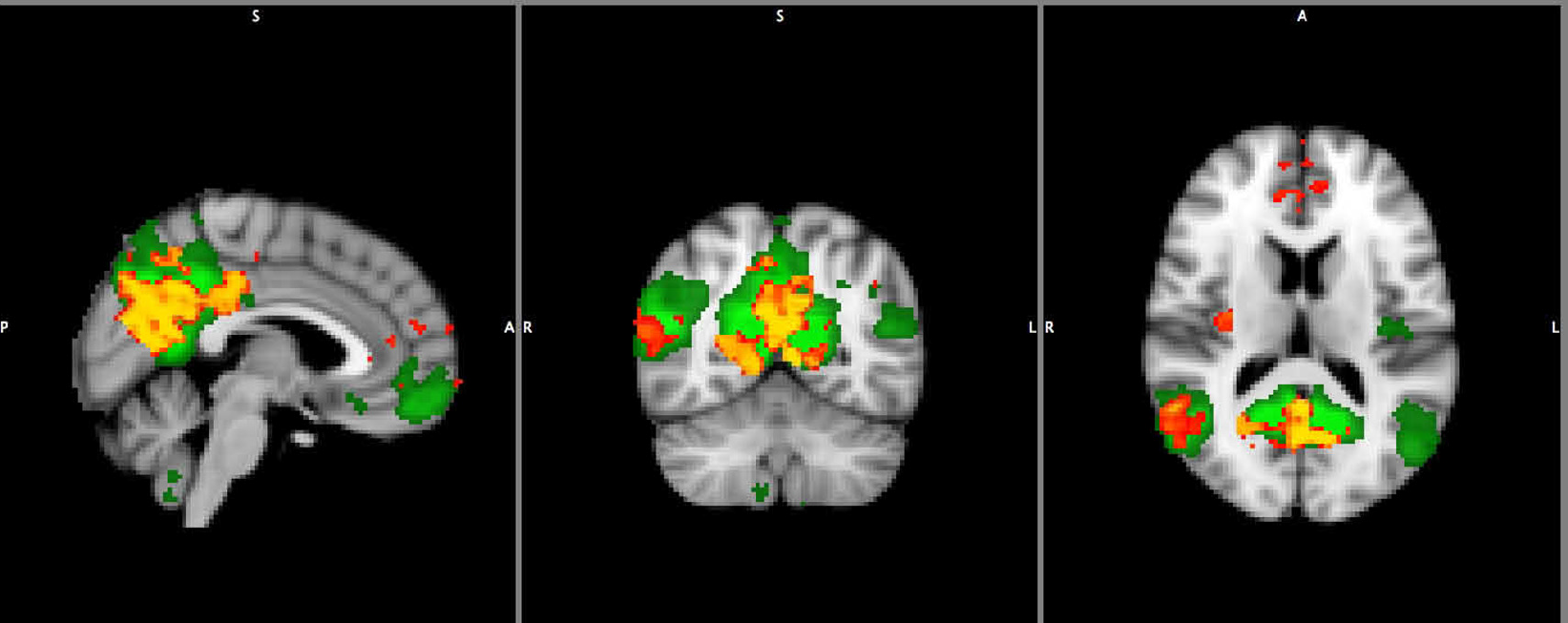No CrossRef data available.
Article contents
Resting – State Functional Connectivity Distortion of Default Mode Network in HIV-associated Neurocognitive Disorder
Published online by Cambridge University Press: 15 April 2020
Abstract
HIV is currently considered a chronic disease where up to two thirds of patients present HIV-associated Neurocognitive Disorders. Nevertheless, neural correlates of HAND are still poorly understood.
To compare the Default Mode Network (DMN) in a sample of HIV individuals with and without HAND.
Characterize functional neural correlates of HAND.
20 HIV+ patients signed informed-consent. HAND was diagnosed using NIMH and NINDS criteria. For each subject, a T2* EPI TR=3s, 120 volumes, 3x3x4mm were obtained in a Philips 1.5T MR; MRI data was preprocessed and Independent Component Analysis (ICA) performed using the FMRIB’s Software Library (FSL). Group-ICA was performed on denoised data and DMN regressed using Dual Regression. Non-parametric statistical maps were obtained using Randomize (FSL).
HAND+ group’s DMN shows a tendency (corrected) to right hemisphere lateralization when compared against the group (fig. 1: Projected over the MNI-152 reference brain, in green, the DMN of our cohort (z-stat>3); over, in red, the contrast of HAND against the group).

Our results show lateralization of DMN associated to HAND diagnosis; we hypothesize this represents interhemispherical disconnection, concordant with subcortical impairments described in literature. Further enrolling of patients and structural DTI analysis is needed.
- Type
- Article: 0204
- Information
- European Psychiatry , Volume 30 , Issue S1: Abstracts of the 23rd European Congress of Psychiatry , March 2015 , pp. 1
- Copyright
- Copyright © European Psychiatric Association 2015





Comments
No Comments have been published for this article.